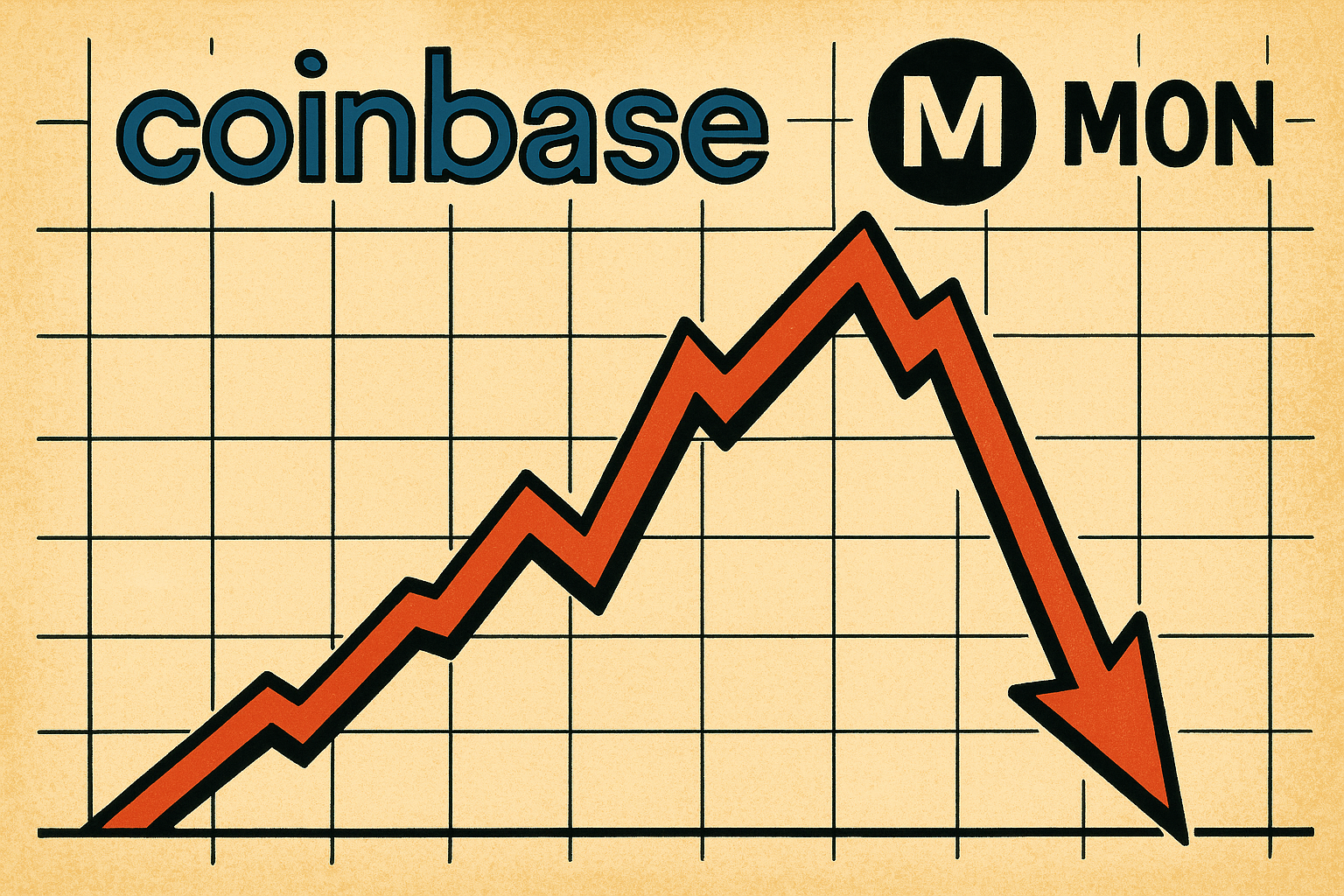News
Galaxy Enters Retail Crypto Fray with “GalaxyOne” — A New Challenger to Robinhood & Kraken

- Share
- Tweet /data/web/virtuals/383272/virtual/www/domains/theunhashed.com/wp-content/plugins/mvp-social-buttons/mvp-social-buttons.php on line 63
https://theunhashed.com/wp-content/uploads/2025/10/galaxy_one_novogratz-1000x600.png&description=Galaxy Enters Retail Crypto Fray with “GalaxyOne” — A New Challenger to Robinhood & Kraken', 'pinterestShare', 'width=750,height=350'); return false;" title="Pin This Post">
For years, Galaxy Digital has been known as a heavyweight in institutional crypto finance. But now the firm is punching into the retail arena. On October 6, 2025, Galaxy launched GalaxyOne, a platform for individual investors that sets its sights on the likes of Robinhood, Coinbase, and Kraken. Can a firm built around servicing institutions succeed where consumer‑oriented platforms already dominate?
From Institution to Individual: The Shift in Strategy
Galaxy Digital has built its reputation managing capital, structuring deals, and providing services to funds, institutions, and high‑net‑worth players. Now it’s aiming to bring that same pedigree—and margins—into the everyday investor space. The new offering springs from Galaxy’s acquisition of the retail finance app Fierce (for $12.5 million) in late 2024.
That acquisition gives Galaxy a launchpad: a user base, app infrastructure, and a foot in the door of consumer finance. The question now: whether Galaxy can convincingly tailor its traditionally “white‑glove” service to a populous, cost-sensitive market.
Galaxy’s Managing Director, Zac Prince, described the target segment as a “middle ground” between massive institutional accounts and retail accounts with less than $1,000. Galaxy doesn’t plan to chase the tiniest retail accounts but is instead aiming for what it deems the “accredited investor” profile.
What GalaxyOne Offers (and What It Doesn’t)
Select Trading Universe
Unlike exchanges that host hundreds of tokens, GalaxyOne begins with a tightly curated menu: Bitcoin, Ethereum, and Solana. That conservative choice signals caution: they want to offer security, liquidity, and legitimacy from the start, rather than bleeding‑edge tokens that carry greater risk and regulatory scrutiny.
Brokerage and Traditional Finance Integration
GalaxyOne doesn’t limit itself to crypto. The platform allows commission‑free trading of thousands of U.S.‑listed stocks and ETFs, directly competing with hybrid platforms like Robinhood.
For cash‑like assets, Galaxy partners with Cross River Bank to offer FDIC-insured deposit accounts. Their “GalaxyOne Cash” product yields 4% APY and is available broadly (i.e., not limited to accredited investors).
Yield Products, With a Caveat
Galaxy is also unveiling a “premium yield” product offering 8% APY, but this is reserved for accredited investors only. That eligibility constraint limits the addressable market: per recent data, only a small fraction of Americans currently qualify as accredited.
This dual‑structure—some features open to all, others gated by accreditation—seems designed to preserve margin while avoiding overexposure. It also aligns with Galaxy’s heritage in higher‑end, institutionally flavored finance.
Strengths, Risks & Competitive Dynamics
Strengths
- Reputation & Trust: Galaxy already has standing in crypto circles; that institutional trust may bolster retail confidence.
- Focus on Safety: Restricting token offerings and using FDIC‑backed alliances is a credibility‑oriented approach.
- Hybrid Model: Offering stocks, ETFs, cash accounts, and crypto in one app gives it a more diversified product mix than pure crypto exchanges.
Risks & Hurdles
- Brand Perception: Galaxy is less known among mainstream retail investors compared to Coinbase or Robinhood.
- User Acquisition Cost: Competing for retail users is expensive, especially in a saturated U.S. market.
- Regulation & Compliance: The yield product and crypto features must navigate shifting U.S. regulatory terrain.
- Limitation of Offerings: Only three crypto assets initially may frustrate users seeking broader exposure.
- Accredited Investor Barrier: Restricting the 8% yield product to accredited investors limits reach and may alienate non‑qualified users.
Competitive Pressures
Platforms like Robinhood, Coinbase, Kraken, and others have deep pockets, broad user bases, and long-established reputations in the retail space. Galaxy is entering late — it will need standout features or customer experience advantages to attract users in this firmly contested space.
One potential lever is Galaxy’s institutional roots: it might fold in elements like research, premium onboarding, or over‑the‑top customer support—features that retail platforms sometimes lack.
What to Watch Going Forward
Adoption & Growth Metrics
Galaxy’s success will partly hinge on how many users sign up, how much trading volume they generate, and how many migrate into higher‑tier products (like yield).
Regulatory Scrutiny
The yield product offering ~8% APY might attract scrutiny from regulators wary of interest-bearing crypto products. Any change in SEC or federal approaches to crypto could force adjustment.
Product Expansion
Will GalaxyOne eventually broaden its token list, introduce derivatives or staking, or open yield products to more users? The pace and direction of expansion will influence its staying power.
International Strategy
Although launched in the U.S. market, Galaxy might look to expand globally. Its institutional base might help when navigating cross-border licensing or local partners.
Conclusion
Galaxy Digital’s venture into retail via GalaxyOne is a calculated bet: it leans on the firm’s institutional gravitas while cautiously testing consumer waters. By packaging brokerage, FDIC-backed cash, and crypto under one roof, GalaxyOne seeks to be more than a crypto exchange—it aspires to be a full‑stack finance app.
Leading this push is Michael Novogratz, Galaxy’s founder and CEO, who frames GalaxyOne as a natural extension of the firm’s ambition to build trusted, regulated, and accessible finance for all market segments. Under his leadership, GalaxyOne could shift the dynamic in retail crypto—if it can deliver a smoother, safer, and more integrated experience while scaling economically in a crowded field.
Ethereum
Small Kingdom, Big Move — Bhutan Stakes $970 K of ETH via Figment to Back National Blockchain Ambitions

Bhutan Turns Heads With Institutional‑Grade ETH Stake
The government of Bhutan quietly moved 320 ETH — worth roughly $970,000 — to Figment, the well-known staking provider, signaling a major shift in how the Himalayan kingdom engages with crypto. Rather than a speculative or retail‑style buy, this is an institutional‑level stake: the amount deployed corresponds to 10 full Ethereum validators (since each validator requires 32 ETH).
More Than Just Yield: Bhutan Anchors Crypto in Governance
Bhutan’s ETH stake comes on the heels of a far broader crypto‑adoption push. In October 2025 the country launched a sovereign national digital identity system — built not on a private chain, but on the public Ethereum blockchain. The decision to anchor citizen identities on a decentralized, globally supported network like Ethereum underscores a long‑term vision: decentralized identity, on‑chain transparency, and national infrastructure built with blockchain.
For Bhutan, this ETH stake isn’t about short‑term price swings or hype — it reflects a strategic bet on Proof‑of‑Stake infrastructure. By running validators via Figment, the government contributes to network security, potentially earns rewards, and aligns its own holdings and governance systems with the protocols underlying its digital‑ID rollout.
What This Signals for Ethereum — and for Crypto Governance
Though 320 ETH is a drop in the bucket compared to total staked ETH globally, the move carries symbolic weight. A sovereign state publicly committing funds to ETH staking via a recognized institutional provider adds to the broader narrative: that Proof‑of‑Stake networks are maturing, and that blockchain can underpin more than speculative assets — it can support identity, governance, and long-term infrastructure.
Moreover, it highlights that institutional staking services like Figment are increasingly trusted not only by hedge funds or corporations, but by governments. According to Figment’s own data, their Q3 2025 validator participation rate stood at 99.9%, and they reported zero slashing events — underlining the reliability such clients are counting on.
What to Watch Next
Will Bhutan stake more ETH? On‑chain data shows the wallet still holds a portion of ETH that remains unstaked — suggesting potential for future validator additions.
Will other nations follow suit? If Bhutan’s mixed use of crypto — combining reserve assets, public‑service infrastructure, and staking — proves viable, it could serve as a blueprint for other smaller states looking to modernize governance with blockchain.
Will this affect ETH’s valuation? Hard to say immediately. The 320 ETH is unlikely to move market prices by itself. But if this step becomes part of a larger trend toward institutional and sovereign staking, the cumulative effect on demand and network security could indirectly support ETH’s long-term value proposition.
Altcoins
Meme Coins Are Losing Their Mojo — From 20 % of Crypto Buzz to Just 2.5 % This Year

Meme‑Coin Hype Takes a Hard Hit
A recent report shows that collective interest in meme coins has plunged from about 20 % of all crypto chatter in late 2024 to roughly 2.5 % by October 2025 — a collapse of nearly 90 %. This shift reflects not only a drop in social buzz but also a broader retreat of speculative enthusiasm across the market. What once felt like the wild west of crypto — rapid launches, viral marketing and huge price swings — is cooling fast.
Market Metrics Confirm the Slide
The decline isn’t just anecdotal. Over the past year, more than 13 million meme tokens flooded the market, many with little to no utility — and most quickly vanished or failed. In a sector built on hype, many of these coins turned out to be short‑lived bets. Overall, the fully diluted market capitalization of memes has dropped by nearly 50 % year‑to‑date, according to blockchain analytics firms.
Trading volume has also cratered. In the first quarter of 2025, memecoin trading volume reportedly fell by 63 %. In many markets, memecoins’ share of overall trading volume dropped below 4 %, marking a dramatic retreat from their previous prominence.
What’s Driving the Decline
The collapse appears driven by a mix of oversaturation, weak fundamentals, and shifting investor preference. The meme‑coin ecosystem became overcrowded — tens of millions of projects launched, many with no clear roadmap or utility beyond chasing quick returns. That oversupply, combined with a broader crypto market slump, has wreaked havoc on liquidity and investor confidence.
Some analysts also cite growing regulatory scrutiny and a rising demand for real utility and transparency rather than hype‑driven “get‑rich‑quick” schemes. Meanwhile, capital and attention are rotating toward more tangible crypto sectors — such as AI‑powered tokens, infrastructure projects, DeFi, privacy coins and even traditional‑finance–style crypto instruments.
Could This Be a “Generational Bottom”?
Some within the community argue that the crash may bottom out soon — and that a new cycle could follow. Once the “dead weight” of unsustainable projects is cleared out, more serious, utility‑driven tokens could regain attention. Others believe the meme‑coin era may be effectively over — that the speculative mania has dissipated, and unless a meme coin brings real innovation or value, investors will avoid it.
Broader Implications for Crypto Markets
The downfall of meme coins underscores a broader maturation of the crypto industry in 2025. Markets appear to be shedding excess speculation and gravitating toward assets with fundamentals. This could lead to healthier ecosystem growth, better token design, and more sustainable long‑term investment — but also less room for high‑risk, high‑reward “moonshot” plays that defined crypto’s early years.
Altcoins
NYSE Arca Files to Launch Altcoin-Focused ETF

Fresh Rule‑Change Proposal Seeks Green Light From SEC
A fresh proposal filed by NYSE Arca could soon bring a new kind of cryptocurrency investment product to the U.S. market. In partnership with asset management giant T. Rowe Price, the exchange is seeking regulatory approval to list an actively managed crypto ETF that goes beyond Bitcoin and Ethereum. If approved, the fund would give investors exposure to a mix of top altcoins—like Solana, XRP, Cardano, and more—through a traditional stock exchange, eliminating the need for wallets, private keys, or crypto trading accounts.
What the Fund Would Do: A Broad, Actively‑Managed Crypto Basket
The Fund isn’t a passive single‑asset product but aims for active management. Its objective is to outperform the FTSE Crypto US Listed Index over the long term.
At launch the Fund intends to hold a diversified basket of “Eligible Assets,” which currently include major tokens such as Bitcoin (BTC), Ether (ETH), Solana (SOL), XRP, Cardano (ADA), Avalanche (AVAX), Litecoin (LTC), Polkadot (DOT), Dogecoin (DOGE), Hedera (HBAR), Bitcoin Cash (BCH), Chainlink (LINK), Stellar (XLM), and Shiba Inu (SHIB).
The Fund may hold as few as five, or as many as fifteen, crypto assets at any given time — and is not strictly tied to the index’s weighting. It may over‑ or underweight certain assets, or include crypto outside the index, guided by active selection criteria such as valuations, momentum and fundamental factors.
The idea is to give investors exposure to a diversified crypto portfolio without having to manage wallets, custody, and rebalancing — while potentially delivering better returns than a static, index‑tracking fund.
Risk Controls, Custody and Governance
To ensure safety and regulatory compliance, the Fund will store its crypto holdings with a dedicated crypto custodian. Private keys will be secured under strict controls, preventing unauthorized access or misuse.
When the Fund stakes any crypto (if staking is employed), it will maintain policies to ensure sufficient liquidity to meet redemptions, especially if a large portion of assets becomes illiquid or locked.
Valuation of the crypto holdings — used to compute Net Asset Value (NAV) per share — will rely on reference rates from third‑party price providers, aggregated across multiple platforms. The NAV will be computed daily, aligned with close of trading on the Exchange or 4:00 p.m. E.T.
Why It Matters for Crypto and Traditional Finance
This filing reflects a broader shift in traditional financial markets embracing diversified, regulated crypto investment vehicles. Unlike earlier spot‑crypto ETFs designed for single assets (e.g., Bitcoin), this Fund proposes a multi‑asset, actively managed basket — potentially appealing to institutional investors and diversified‑portfolio allocators seeking crypto exposure with traditional ETF convenience.
If approved, the Fund would offer a streamlined, compliance‑friendly bridge between traditional capital markets and crypto assets, lowering operational friction for investors who prefer not to deal with wallets, exchanges, or self‑custody.
The approach may also set a precedent: showing that active crypto ETFs can meet listing standards under rules originally written for commodity‑based trusts. This could open the door for more innovation — perhaps funds targeting niche themes (smart‑contract tokens, layer‑2s, tokenized real‑assets) while still abiding by exchange and regulatory requirements.
What’s Next
The SEC review period typically spans up to 45 days from publication (or longer if extended), during which comments from market participants and the public may shape the final decision.
If approved, it may take some additional time before shares begin trading — during which documents like the fund’s prospectus, ETF symbol, and listing date will be finalized and disclosed by the sponsor.
-

 Cardano2 months ago
Cardano2 months agoCardano Breaks Ground in India: Trivolve Tech Launches Blockchain Forensic System on Mainnet
-

 Cardano2 months ago
Cardano2 months agoCardano Reboots: What the Foundation’s New Roadmap Means for the Blockchain Race
-

 Cardano2 days ago
Cardano2 days agoSolana co‑founder publicly backs Cardano — signaling rare cross‑chain respect after 2025 chain‑split recovery
-

 Bitcoin2 months ago
Bitcoin2 months agoQuantum Timebomb: Is Bitcoin’s Foundation About to Crack?
-

 Cardano2 months ago
Cardano2 months agoAfter the Smoke Clears: Cardano, Vouchers, and the Vindication of Charles Hoskinson
-

 Cardano2 months ago
Cardano2 months agoMidnight and Google Cloud Join Forces to Power Privacy‑First Blockchain Infrastructure
-

 Ripple2 months ago
Ripple2 months agoRipple CTO David “JoelKatz” Schwartz to Step Down by Year’s End, but Will Remain on Board
-

 News2 months ago
News2 months agoRipple’s DeFi Awakening: How mXRP Is Redefining the Role of XRP








